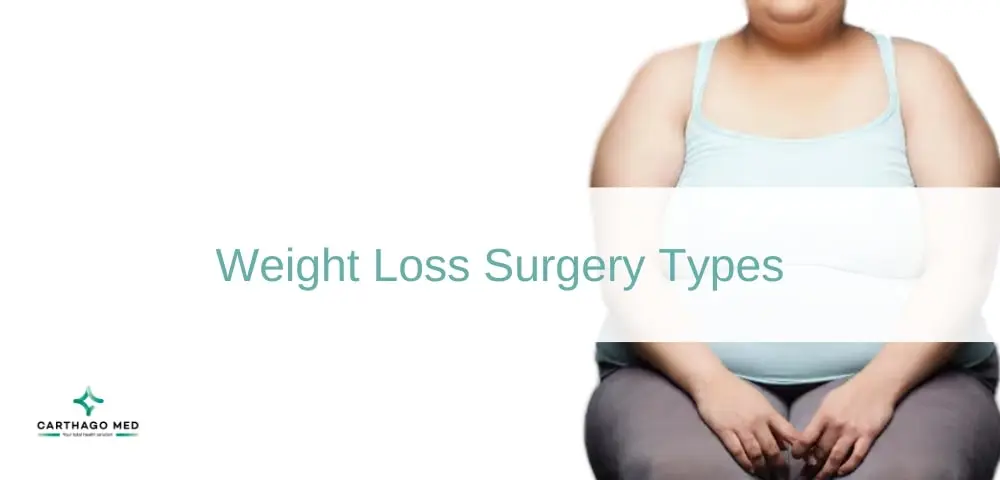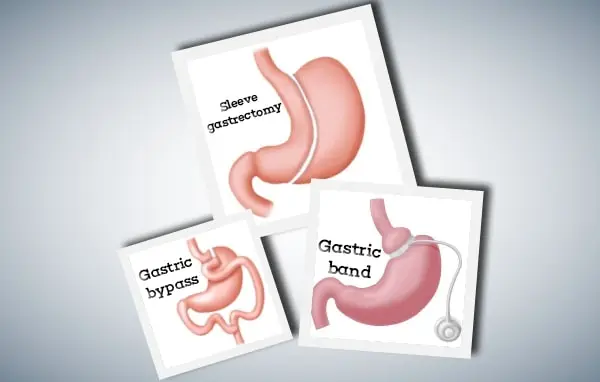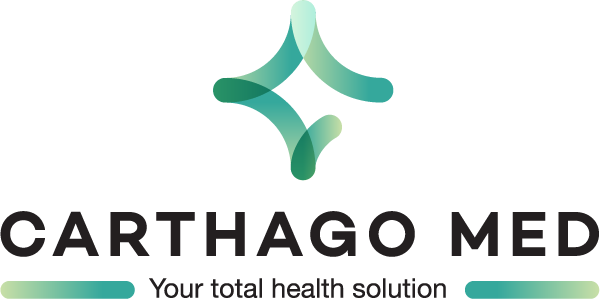
Weight Loss Surgery Types
If you’re thinking about weight loss surgery, you may feel overwhelmed with the abundance of options at your disposal. Don’t fret – getting acquainted with the different types of procedures is crucial to making a well-informed decision about your health and happiness. This comprehensive article will cover the main types of weight loss surgeries, such as gastric band, gastric bypass, sleeve gastrectomy, intra-gastric balloon, biliopancreatic diversion, and primary obesity surgery endolumena.
Main Types of Weight Loss Surgery
Gastric Band
Are you ready to embark on a journey towards weight loss and begin exploring your options? Have you considered the possibility of the gastric band as an effective solution? This surgical procedure involves placing an adjustable band around the upper portion of the stomach, ultimately curbing food intake and promoting healthy weight loss. Join us as we delve into the key components of gastric band surgery. Laparoscopic adjustable gastric banding (LAGB), also known as gastric band surgery, is a minimally invasive procedure designed to aid individuals in reaching their weight loss goals by restricting the stomach’s capacity for food. Here are some vital aspects to take into consideration. During gastric band surgery, a silicone band is placed around the upper part of the stomach to create a small pouch. This pouch then restricts the amount of food that can be comfortably eaten, resulting in a sensation of fullness with smaller meals. One notable advantage of the gastric band is its highly adaptable nature. Regular adjustments in a clinical setting can either tighten or loosen the band, catering to each individual’s unique weight loss goals. This makes the gastric band a versatile tool that can effectively address the varying needs of those seeking to lose weight.
Gastric band surgery is a method of weight loss that encourages a measured and sustainable approach. By gradually reducing weight, the body is able to adjust to the changes and minimize the possibility of nutrient deficiencies, commonly found in rapid weight loss methods. Following the surgery, patients are advised to modify their diet, placing emphasis on nutrient-rich foods consumed in smaller portions. It is crucial to maintain contact with healthcare professionals through regular check-ins to ensure the band is still effective and make any necessary modifications. This type of surgery requires a lifelong dedication to healthy eating, physical activity, and continued medical supervision.
Gastric bypass
Are you ready to revolutionize your weight loss journey? If so, gastric bypass surgery may be the perfect solution for you. This cutting-edge surgical procedure, also known as Roux-en-Y gastric bypass, is designed to drastically reduce excess weight and improve overall health. Let’s dive into the amazing benefits of this transformative surgery. Firstly, the surgery involves creating a smaller stomach pouch by stapling the top portion of the stomach. This restriction on food intake leads to a sense of fullness with smaller meals. Additionally, the surgery reroutes a section of the small intestine, creating a direct pathway for food to enter the lower portion of the intestine. The combination of these techniques results in significant and sustainable weight loss. This not only reduces calorie absorption but also alters the production of hormones related to hunger and fullness.
The results of gastric bypass are truly remarkable, leading patients to achieve significant and swift weight loss. This procedure is highly regarded for its ability to address conditions associated with obesity, including type 2 diabetes and hypertension. However, it is important to consider post-surgery factors. Patients must make gradual adjustments to their diet, transitioning from liquids to solids and prioritizing nutrient-rich foods in smaller portions. It is also important to note that due to changes in nutrient absorption, patients may need to supplement their diet to avoid any nutritional deficiencies. To ensure successful outcomes, a lifelong dedication to healthy eating habits, exercise, and regular medical check-ins are crucial after gastric bypass surgery. Real-life transformations before and after the surgery showcase not only physical changes but also improved overall health and enhanced quality of life.
Those who yearn for a successful and all-encompassing weight loss strategy would greatly benefit from considering gastric bypass surgery as a life-changing option. Nonetheless, deliberating over one’s well-being, daily habits, and desired weight loss accomplishments is pivotal. It is crucial to seek guidance from seasoned medical experts in order to make well-informed choices and embark on a triumphant venture towards a fitter, more content version of yourself.
Sleeve Gastrectomy
Sleeve gastrectomy, a highly sought-after form of weight loss surgery, is gaining popularity due to its impressive results. This transformative procedure involves removing a large portion of the stomach, creating a smaller, sleeve-shaped organ. Known as gastric sleeve surgery, it holds a significant amount of significance and entails noteworthy considerations. By removing approximately 80% of the stomach, a banana-shaped sleeve is formed. The benefits are remarkable, including rapid weight loss in the first year, decreased production of appetite-stimulating hormones, betterment of obesity-related conditions, and motivation for long-term lifestyle changes. When going through the post-surgery phase, it is crucial to pay close attention to your diet, gradually transitioning from liquids to solids and incorporating regular exercise to increase weight loss and improve your overall well-being. Real-life examples in before-and-after photos showcase not just physical transformations, but also the positive effects on mental and emotional health. Ultimately, the choice to have a gastric sleeve procedure is deeply personal and necessitates careful consideration of the potential benefits and challenges. Seeking advice from experienced healthcare professionals, engaging in goal-oriented discussions, and making informed decisions are essential components of embarking on a successful weight loss journey.

Intra-gastric Balloon
Are you looking into non-surgical options for weight loss? If that’s the case, the intra-gastric balloon may be the perfect solution for you. This cutting-edge approach involves placing a balloon in the stomach, giving a sense of fullness. Let’s explore the important elements of this procedure. The intra-gastric balloon is a non-invasive method specifically designed to assist with weight loss. In a simple outpatient process, a deflated balloon is inserted into the stomach and then inflated to produce a feeling of satisfaction. This naturally decreases appetite and leads to a successful reduction in food intake and ultimately, weight loss. An outstanding aspect of this procedure is its gentle approach. Unlike conventional weight loss surgeries, the intra-gastric balloon method does not involve any cuts or changes to the digestive system. Furthermore, it is only a temporary solution, usually lasting for about half a year before being removed. This gives the stomach enough time to return to its natural size. To optimize the balloon’s efficacy, individuals are advised to adopt significant lifestyle modifications, such as following a nutritious diet and engaging in regular physical activity. The ultimate objective is not just to attain immediate weight loss, but also to kickstart lasting, healthy habits.
Caring for the post-balloon requires strict adherence to dietary guidelines. Regular check-ups are necessary to ensure the patient’s safety and achieve the desired weight loss. The removal of the balloon, a simple outpatient procedure, signifies the end of its temporary intervention. While the intra-gastric balloon has the potential to yield significant results, managing expectations is key. Each person may have varying outcomes, highlighting the need for a dedicated effort towards lasting changes in one’s lifestyle for a successful outcome.
The intra-gastric balloon offers a compelling alternative to surgical methods for weight loss. Not only is it a temporary solution, but it also serves as an effective tool to jumpstart healthier habits and lay a strong foundation for a lasting and gratifying weight loss experience.
Biliopancreatic Diversion
If you’re considering a more comprehensive approach to weight loss surgery, look no further than Biliopancreatic Diversion (BPD). This revolutionary procedure initiates significant modifications to the digestive system to promote effective weight loss. Combining both restrictive and malabsorptive elements, BPD limits food intake and reduces the absorption of calories and nutrients in the small intestine. The surgical process involves the removal of a portion of the stomach, creating a smaller stomach pouch. Additionally, the small intestine is strategically altered to redirect food to allow from the duodenum and part of the jejunum, resulting in restricted nutrient absorption.
BPD surgery curbs food intake by shrinking the stomach and bypassing a portion of the small intestine to decrease calorie and nutrient absorption. This leads to significant and sustained weight loss, making it a promising solution for severe obesity. The malabsorptive factor further boosts the surgery’s effectiveness by aiding calorie loss. To ensure continued success, careful attention must be paid to the post-BPD phase. Given the reduced nutrient absorption, lifelong supplementation is often necessary to prevent deficiencies for those who undergo BPD. It is essential to regularly undergo medical check-ups in order to keep a close watch on nutritional levels, overall health, and any possible complications. A diet for those who have undergone BPD typically consists of nutritionally rich foods, and patients are encouraged to adhere to specific dietary recommendations in order to maintain proper nourishment.
Delving into the experiences of those who have undergone Biliopancreatic Diversion offers valuable insights into the potential effects on weight loss and overall wellness. Personal accounts of life before and after the procedure reveal not only visible physical changes, but also advancements in overall health and quality of life. Although Biliopancreatic Diversion can effectively lead to significant weight loss, it is crucial to carefully weigh the long-term nutritional consequences. It is highly recommended to consult with knowledgeable healthcare experts when considering this procedure, as the advantages must be carefully evaluated against any potential risks based on your individual health needs.
Primary obesity surgery endolumena
The Groundbreaking Minimally Invasive Weight Loss Procedure You Need to Know About. If you or a loved one is struggling with obesity, you may have heard of POSE, a revolutionary technique that uses sutures in the stomach liningto, reducing its capacity. But what exactly is POSE, and what are the important factors to consider before undergoing this procedure? Join me as we explore the details and potential benefits of Primary Obesity Surgery Endolumena (POSE), the game-changing. Losing weight can be a daunting challenge, but with the innovative technique of POSE, it becomes much more manageable. This procedure specifically targets the stomach’s capacity, leading to reduced food intake and eventual weight loss. What makes POSE even more appealing is its minimally invasive approach, with no need for external incisions. Through the use of specialized instruments, sutures are strategically placed along the stomach lining, creating pleats that effectively decrease its volume and restrict food intake. This makes POSE a less invasive alternative to traditional weight loss surgeries. Moreover, because of its minimally invasive approach, POSE typically results in a quicker recovery time compared to other weight loss surgeries that are more invasive. This often translates to less discomfort for patients post-surgery and allows them to return to their daily routines sooner.
After undergoing the POSE procedure, individuals are encouraged to gradually modify their diets to accommodate their decreased stomach capacity. Consistent follow-up appointments are crucial in monitoring progress, making any necessary suture adjustments, and addressing any concerns. While POSE serves as a valuable weight loss tool, adopting a healthy lifestyle with a balanced diet and regular exercise is imperative for long-term success. Observing the transformations of those who have undergone Primary Obesity Surgery Endolumena (POSE) offers valuable insights into its potential impact on weight loss and overall well-being. Before-and-after stories often highlight not only physical transformations but also improved health and increased confidence.
Overall, POSE presents a compelling alternative for those looking for a gentler and successful method of shedding pounds. To make an informed decision, it is imperative to consult with experienced medical experts who can help determine if POSE is the right fit for you based on your specific health concerns and preferences.
Which Type of Weight Loss Surgery is Best?
Selecting the optimal weight loss surgery involves considering multiple elements, such as your overall well-being, body mass index (BMI), and daily habits. Consulting with a qualified healthcare expert is essential in determining the ideal choice that caters to your unique requirements.
Assessment Before Weight Loss Surgery
Preparing for weight loss surgery requires a comprehensive evaluation to ensure safety and success. This includes a careful review of your medical background, habits, and potential dangers. It is also crucial to fully grasp the pros and cons of each available procedure in order to make an informed choice.









